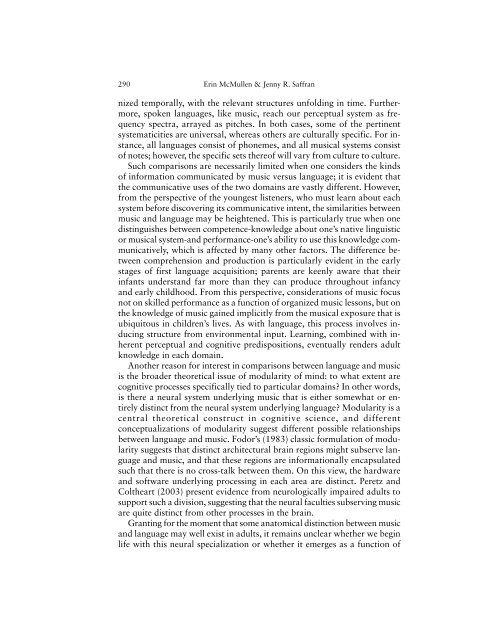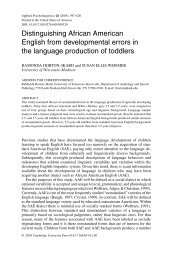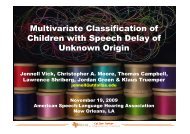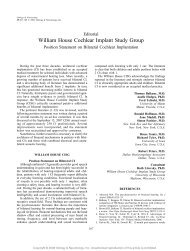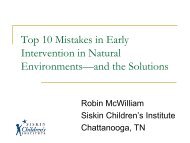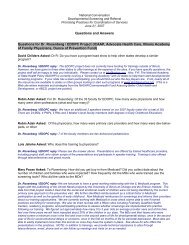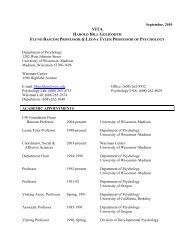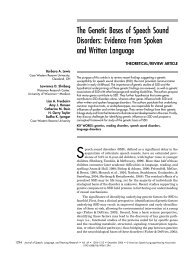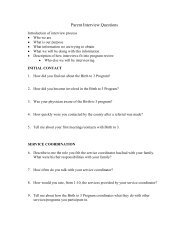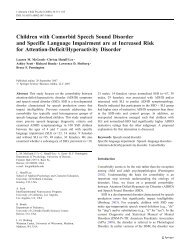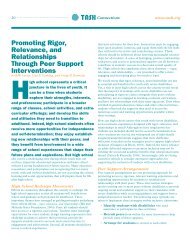Music and Language: A Developmental Comparison - Waisman ...
Music and Language: A Developmental Comparison - Waisman ...
Music and Language: A Developmental Comparison - Waisman ...
You also want an ePaper? Increase the reach of your titles
YUMPU automatically turns print PDFs into web optimized ePapers that Google loves.
290 Erin McMullen & Jenny R. Saffrannized temporally, with the relevant structures unfolding in time. Furthermore,spoken languages, like music, reach our perceptual system as frequencyspectra, arrayed as pitches. In both cases, some of the pertinentsystematicities are universal, whereas others are culturally specific. For instance,all languages consist of phonemes, <strong>and</strong> all musical systems consistof notes; however, the specific sets thereof will vary from culture to culture.Such comparisons are necessarily limited when one considers the kindsof information communicated by music versus language; it is evident thatthe communicative uses of the two domains are vastly different. However,from the perspective of the youngest listeners, who must learn about eachsystem before discovering its communicative intent, the similarities betweenmusic <strong>and</strong> language may be heightened. This is particularly true when onedistinguishes between competence-knowledge about one’s native linguisticor musical system-<strong>and</strong> performance-one’s ability to use this knowledge communicatively,which is affected by many other factors. The difference betweencomprehension <strong>and</strong> production is particularly evident in the earlystages of first language acquisition; parents are keenly aware that theirinfants underst<strong>and</strong> far more than they can produce throughout infancy<strong>and</strong> early childhood. From this perspective, considerations of music focusnot on skilled performance as a function of organized music lessons, but onthe knowledge of music gained implicitly from the musical exposure that isubiquitous in children’s lives. As with language, this process involves inducingstructure from environmental input. Learning, combined with inherentperceptual <strong>and</strong> cognitive predispositions, eventually renders adultknowledge in each domain.Another reason for interest in comparisons between language <strong>and</strong> musicis the broader theoretical issue of modularity of mind: to what extent arecognitive processes specifically tied to particular domains? In other words,is there a neural system underlying music that is either somewhat or entirelydistinct from the neural system underlying language? Modularity is acentral theoretical construct in cognitive science, <strong>and</strong> differentconceptualizations of modularity suggest different possible relationshipsbetween language <strong>and</strong> music. Fodor’s (1983) classic formulation of modularitysuggests that distinct architectural brain regions might subserve language<strong>and</strong> music, <strong>and</strong> that these regions are informationally encapsulatedsuch that there is no cross-talk between them. On this view, the hardware<strong>and</strong> software underlying processing in each area are distinct. Peretz <strong>and</strong>Coltheart (2003) present evidence from neurologically impaired adults tosupport such a division, suggesting that the neural faculties subserving musicare quite distinct from other processes in the brain.Granting for the moment that some anatomical distinction between music<strong>and</strong> language may well exist in adults, it remains unclear whether we beginlife with this neural specialization or whether it emerges as a function of


